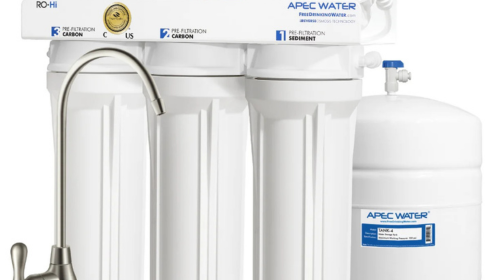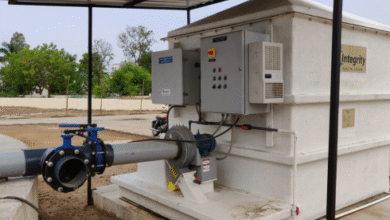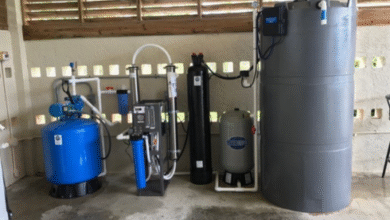Ditch the Plastic: Why More Kingston Homes Are Switching to Osmosis Water Filters

Let’s be real—if you’re still hauling bottled water home every week, you’re probably over it. The plastic waste. The cost. The weird aftertaste in some brands. And then there’s the storage problem. That stack of water bottles hogging half your pantry? Not exactly the home aesthetic most of us are going for.
If you live in Kingston, WA, where water quality can be a bit of a mixed bag depending on your neighborhood or well source, it’s no wonder so many people have turned to a better solution. One that’s smarter, cleaner, and surprisingly simple: the osmosis filter for home use.
Let’s break down why reverse osmosis (RO) is becoming the go-to choice for families and households who are tired of the bottled water shuffle—and want real peace of mind when they turn on the tap.
Wait—What’s Reverse Osmosis Again?
If you haven’t taken a chemistry class in a while (or ever), don’t sweat it. Here’s the quick version: reverse osmosis is a water filtration method that uses pressure and a semi-permeable membrane to remove impurities. That includes the big stuff like lead, arsenic, and nitrates—and the sneaky stuff too, like chlorine, fluoride, PFAS, and weird-tasting minerals.
Most RO systems have multiple stages: a sediment filter, carbon filters, the RO membrane itself, and often a final “polishing” stage that makes the water taste extra crisp. The result? Water that’s clean, clear, and just… better.
Why RO in Kingston Makes Total Sense
Let’s talk local. Kingston’s water isn’t bad, but it can be unpredictable. Depending on whether you’re on city supply or a private well, you might have high mineral content, sediment, or even occasional taste and odor issues.
Add to that Washington’s aging infrastructure in some areas, and you’ve got all the more reason to take control of your water quality. You deserve more than just “good enough.” You deserve Kingston clean water—water that makes you want to drink more of it, not less.
And that’s what makes RO systems so appealing. It doesn’t matter where your water starts. The system transforms it into something you’ll trust and actually enjoy drinking.
The Bottled Water Problem
Here’s a quick math check: If your family goes through just two cases of bottled water a week at $5 a pop, that’s $520 a year. For water. That’s not even counting the gas, the storage headaches, or the guilt from tossing all those bottles in the recycling bin (or worse, the trash).
And the kicker? Much of that bottled water comes from municipal sources and is just filtered tap water anyway.
This is why an RO system is such a game-changer. With one solid investment, you’ve got a bottled water alternative WA folks are finally getting excited about—and it lives right under your kitchen sink.
So What’s It Like to Have One?
Pretty seamless, honestly.
Most RO systems are installed under your sink and connect to a small faucet dedicated to purified water. Turn the tap—out comes fresh, clean, chilled water. It’s that easy.
- Coffee and tea? Taste smoother.
- Soups and pasta? Better flavor.
- Ice cubes? Crystal clear, not cloudy chunks.
Some people even go the extra mile and connect their RO system to their fridge water line. Others use it to fill jugs for the gym, hikes, or the kids’ sports practice. Once it’s in your routine, it becomes second nature—and bottled water just doesn’t make sense anymore.
What About Cost and Maintenance?
A good under-sink RO system typically runs between $200–$600, depending on brand and features. Installation? About $150–$250 if you go the professional route. (DIY is totally possible, though, if you’re handy.)
As for upkeep, you’ll replace filters every 6 to 12 months depending on usage. Membranes typically last 2 to 3 years. Costs for replacement filters are reasonable, and most modern systems are modular and easy to maintain.
So yeah, it’s an upfront investment—but when you consider how much you’ll save on bottled water (not to mention the convenience and the environmental impact), it adds up fast.
Choosing the Right System
There are a lot of options out there, but here’s what to look for:
- NSF certification – This ensures it actually removes what it claims to.
- Remineralization filter – Some systems add back essential minerals for taste and health.
- Storage tank size – Bigger households may need more capacity.
- Flow rate – Faster is better for convenience, especially if multiple people are using it.
Popular brands like APEC, iSpring, Waterdrop, and Home Master all have reliable models that work well for home use—and many offer local support and service options across Washington.
You Deserve Better Water
Here’s the thing. Water is the most basic building block of our health, our cooking, and our homes. It shouldn’t be something you second-guess.
Whether you’re trying to get the kids to drink more water, cut plastic waste, improve your morning coffee, or just stop lugging awkward cases into the trunk every week, a home RO system changes the game.
One small faucet. One clean source. Zero regret.
Osmosis filter for home, Kingston clean water, bottled water alternative WA—this isn’t a trend. It’s a shift in how we think about the water we drink every single day.
So next time you crack open a plastic bottle, ask yourself: is this really the best I can do?
Spoiler: It’s not. You’ve got better options—right under your sink.




